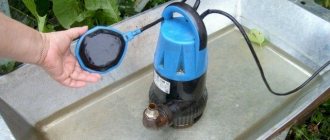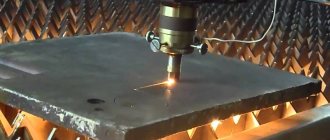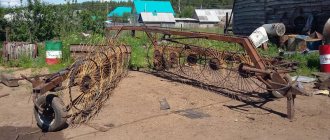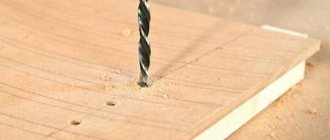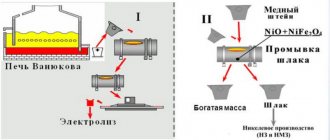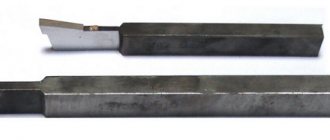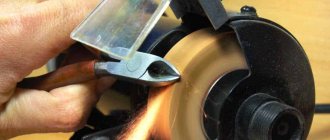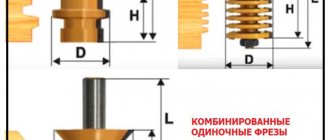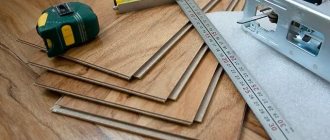A rake is the most multi-functional tool in the garden. They can be used to loosen, break clods of earth, remove leaves and debris, revitalize the lawn and do many other things. But each task requires a special rake.
On the store counter you can see ten rakes of various configurations, materials and colors. Their prices also vary significantly, which can confuse a novice gardener. You should choose a rake depending on what kind of work you are going to do with it, but there are a number of general requirements for this garden tool.
Types of rakes
Rakes are divided into several types:
- straight for the garden,
- aerator,
- lawn,
- rake with twisted teeth,
- fan;
- mini version of the rake,
- transformers.
It is best to have different models at your disposal, each of which will serve a specific purpose. Since, for example, fan rakes are not very suitable for loosening dug up soil.
In order to understand in what cases it is necessary to use one or another type of rake, let's take a closer look at some of their options.
Using a rake
The main purpose of a rake is to loosen and level the ground. Therefore, when choosing a rake, you should give preference to reliable classic models with straight teeth. They are versatile enough to then mow the lawn, rake dry leaves or cut ventilation grooves in the soil to improve air exchange.
Specialized models should be purchased only when you have a lot of the same type of work for which this particular option is needed. For example, fan rakes are very useful for gardeners: they are excellent for raking dry leaves around trees or from raspberry thickets, and collecting carrion. The lawn option is useful for caring for lawns - they are not of much use in the garden or vegetable garden.
In cases where the workload is very large, it is worth considering agricultural models. This is no longer a hand tool, but a mounted or trailed unit used for work on large areas. They will not be useful to an ordinary summer resident, but for a farmer even with a relatively small field - yes.
Straight rake (Soviet version)
Garden rakes are a universal variety. Such equipment is at the disposal of any owner. They can loosen the soil, form the desired shape of the bed, and level the surface of the land.
They clean out plant debris and break up crumpled soil that forms after digging up the ground. This type of rake is convenient for pulling out plant roots that are stuck in the soil.
A simple version of a pin rake has no more than 12 teeth. Very often the equipment is covered with dark enamel.
There are rake models with up to 16 teeth. This larger grip is suitable for working on large areas.
Handling a wider rake saves labor and time.
Types and features
There are several types of rakes:
- garden (aka Soviet pin or straight),
- with “twisted” teeth,
- aerator,
- fan,
- for lawns,
- mini rake,
- transformers.
It is ideal to have different modifications at your dacha, since they all serve specific purposes and, for example, fan-shaped ones will not be able to properly loosen the soil after digging up the garden. To understand how to use them in work, let’s take a closer look at several options.
Straight (Soviet pin)
Such rakes are universal and can be found in almost any household. They are used to loosen the soil, form proper beds, and level the surface of the earth. They can be used to clean out plant debris, crush large pieces of soil that formed during digging, and pull out the roots remaining there.
Simple pin rakes have 8 to 12 teeth. Most often they are painted with dark enamel. There are models with increased grip (with 14 and 16 teeth), they are suitable for working on a large area. A wider tool helps save time and effort.
The nozzle on the handle can be either plastic or metal.
Twisted
This type of rake is made of thick metal and therefore they are heavier and more durable. The twisted design of the teeth also adds strength to them.
Suitable for heavier and rougher work. You don't have to worry about breakage.
Rake aerators
If the soil on the site is very heavy, then even twisted teeth will not help. Here it’s worth taking a closer look at the aerator type. Such “heavy artillery” is made from hardened steel with galvanic coating.
They have very sharp teeth, curved in the shape of a sickle, with which they literally cut through the ground. The tool is double-sided.
Fan
In order to remove small debris, fallen leaves, or simply comb the lawn, you will need a fan rake. They can be plastic or steel. They are distinguished from the rest by long springy teeth.
Lawn
This type of rake has very densely set teeth. The width varies from 50 to 60 cm, and limiting arcs are fixed in the upper part, which prevent the collected grass from scattering.
The tool greatly simplifies the task when collecting cut grass (for example, if the mower does not have a grass catcher or if you mowed it with a trimmer or a regular hand scythe).
Mini rake
There are also mini rakes with a short handle. They are designed for caring for small flower beds, indoor plants, and for loosening row spacing in beds.
If you work with a large rake, you can easily damage the plant, but using such a mini-helper you can easily reach hard-to-reach areas.
Transformers
This is a whole set, which includes a handle and several attachments. Typically it includes a leaf rake, a regular one, a flower bed attachment, and a few other options.
Having such a set, there will always be something to work with. It takes up much less space than a whole bunch of separate tools and is easy to transport.
Aerator rake
Designed for areas with heavy soil. The equipment is made of galvanized steel.
Aerator rakes have sharp teeth. They bend into a sickle shape and thin out the soil very well. There are double-sided versions of such rakes.
Twisted tool
This type of rake is made of thick, durable material. Therefore they are quite heavy.
They are distinguished by high strength due to the twisted shape of the teeth. They very rarely break, so this is the most suitable option for heavy earthworks.
DIY tool box according to drawings: instructions with step-by-step guide- Form for paths - a large selection of forms and a simple method for creating a beautiful and comfortable garden (photo + video)
Do-it-yourself snow blower - we remove snow easily, an overview of designs and types for a suburban area
Lawn rake
This type of rake has a densely packed row of teeth. Restrictive elements are fixed on top of them, which hold the collected grass and prevent it from scattering. This is simply ideal for raking cut vegetation.
Modern rakes are made from different materials, namely:
- wood,
- plastics,
- metal
Wooden rakes are lightweight and easy to use. With their pointed teeth you can break clods of earth and level the surface of the area. Suitable for cleaning dry vegetation.
The only drawback is not very high strength. If you overdo it, you can break their wooden components.
Plastic rakes are designed for light work with a small load.
How to bend a pipe - recommendations and tips for doing work at homeGasoline motor pump - we pump water without being tied to an outlet, basic requirements for the device
- Do-it-yourself wood splitter - mechanized help when preparing firewood for the winter (photo + video)
Plastic rakes are ideal for leveling the ground. They do not get entangled in vegetation, and leaves are not strung on their teeth. Plastic is not afraid of moisture, it is not subject to corrosion.
Metal rakes are durable. Unfortunately, the metal can become rusty.
But, in fairness, it is worth noting that many manufacturers cover their equipment with a high-quality polymer coating, which protects the tool from corrosion.
Kinds
On the shelves of modern specialized stores you can see a large number of types of rakes, which differ in the type of design:
- Erfurt - the shape of the handle at the point of attachment to the handle in the shape of a fork;
- American - the presence of arcs at the place where the handle is fixed;
- English - fixation of the handle through a sleeve.
Direct
The classic country model, which consists of a crossbar on which straight or curved bayonets are attached perpendicularly. This tool can be made of metal and wood. Metal rakes can have twisted teeth and are used to loosen the soil, while wooden tools are used only for working with dry grass and leaves. Straight rakes can be divided into three types depending on the width of the cross plate:
- small – plate width no more than 25 cm;
- medium - the width of the metal sheet is 50 cm;
- large – plate size more than 60 cm.
Fan
A special sliding tool, the shape of which resembles a triangle, and the working part consists of a large number of wire teeth that are rounded at the end. To make the teeth, thick wire is used, the diameter of which is 0.3 cm. On sale you can see plate rakes made of metal and plastic. This model is suitable for removing light debris and leaves from uneven surfaces.
Aerators
A non-standard model that has the shape of a classic rake. The main feature is pointed sickle-shaped teeth. This device will help not only clean the surface of the lawn from debris, but also provide a little aeration.
Milling
Double-sided rake, which has a wide area of use and an unusual design. On one side of the metal plate there are sharp, sickle-shaped teeth, and on the other side there is a row of teeth that have a small distance between them.
Specialized tool
It has high productive and ergonomic properties and is used in a narrow field.
For the lawn. The width of the working part is more than 50 cm, and the teeth are close to each other. On the working surface there are limiting rods, which make it possible to rake a large volume of grass and move it to its destination.
For loosening - a heavy tool with twisted or straight teeth for excavation work.
Mini rake
A miniature tool that has a small number of teeth. Purpose: tillage of soil in flower beds, flower pots and containers.
Transformers
A universal tool that consists of an aluminum handle, a set of plastic attachments and a quick-release device. Advantages: convenience, versatility, transportability, ease of use, long service life.
Particular attention should be paid to the walk-behind tractor rake, which significantly speeds up the process of preparing hay for animals (raking, turning and collecting). Advantages - minimal physical effort, durability, reliability and high speed of work
These devices differ in the following parameters:
- method of manufacturing the working part;
- type of traction used;
- type of fastening.
Among the main technical advantages, manufacturers note the following:
- large working width;
- windrow formation;
- high level of productivity;
- low financial costs;
- set number of rake passes;
- high maneuverability;
- automatic control mode.
Manufacturers produce two types of devices for small tractors.
- Wheel-mounted - the number of wheels installed obliquely is in the range from 3 to 5. Advantages - low cost of spare parts and ease of installation, durability, powerful traction drawbar and frame, convenient wheel adjustment, simple control system.
- Rotary - consist of horizontal disks that are driven by the engine through the PTO.
Choosing the right rake
Many people wonder how to choose a comfortable rake? First of all, you should pay attention to the stalk. It is important to consider for what purpose you will use the equipment.
If you just need to remove small debris, then the length of the cutting should correspond to your height. It is important that the stalk is comfortable to grasp.
It is better to give preference to a light and smooth holder. It is especially preferable to have anti-slip rubber elements on the handle.
Try to purchase equipment that is as functional as possible. For certain jobs, the rake crossbar must have certain parameters:
- For lawn treatment, a size of 50-70 centimeters is suitable;
- for working in limited areas and hard-to-reach places - 10-20 centimeters;
- for standard tillage and waste collection - 30-50 centimeters.
Plastic rakes are quite suitable for collecting plant debris. Painted iron products are best used for dry work.
Equipment with anti-corrosion coating - for working with damp soil and wet vegetation. The hardened aluminum rake is lightweight and a versatile tool.
If there are no limiters on the rake, and the teeth are located very sparingly, then it will be quite difficult to comb the lawn with such a tool.
It is not recommended to use a rake with long and twisted teeth when raking dry vegetation.
On hard soil that collects in large lumps, it is better to use metal tools. Do not use plastic rakes on hard soil.
DIY rake ideas
If you are interested in how to make a rake with your own hands, we can offer you several simple methods.
Wooden rake
To do this you will need several types of wood. It is better to make cuttings from light species: pine, birch or poplar. The working part of the rake and tines require harder rock.
First of all, a wooden block is made, which is carefully processed with a plane. Next, holes with a diameter of no more than one and a half centimeters are drilled in the handle. The distance between the holes should be 4 centimeters.
Now let's start producing teeth. They can be planed with a sharp knife. The length of each clove is about 10 cm. Their ends must be sharpened. The diameter of the teeth must exceed the diameter of the holes on the holder.
One end of the cutting is sawed to a length of approximately 25 centimeters and secured with nails. Then its parts are moved apart and sharpened. Next, the rake structure is assembled together.
Metal rake
You can't do without a welding machine. The steel pipe is cut into pieces: one larger, the other smaller. Teeth are cut out of the reinforcing rod.
A piece of pipe that needs to be flattened longer. Then weld the teeth to it. Weld the stalk exactly in the middle. It is recommended to additionally attach the rake holder with self-tapping screws.
Very often, rakes made by yourself are the most convenient equipment for work. And no wonder, since homemade instruments are made taking into account the physical parameters of the owner.
How to choose a comfortable rake
In order to competently choose this tool, you need to think about what kind of work it will perform, on what soil and with what application of force. The strength of a tool is determined by the material from which it is made. Wooden and plastic rakes can only be used for light work - removing grass and hay, while metal rakes are used for cultivating soil.
When several people are working with one tool, it is better to purchase a rake with an extendable handle; they are suitable for people of different heights.
A rake with a narrow comb will be a godsend for lovers of flower beds and berry front gardens; they will allow you to penetrate the most difficult areas and improve them.
If you want to get a tool that you will use for many years, then purchase it in specialized stores where they provide a quality certificate confirming the service life and material of manufacture.
The handle should be tightly connected to the comb. Rarely or frequently set teeth characterize the range of work performed by them; rakes with rare teeth are used for cleaning large debris, while rakes with frequent teeth are used for cleaning small leaves and stones.
Remember that the material of manufacture determines the weight of the tool. If you want a lightweight tool, purchase a rake with an aluminum or wooden handle; its thickness also matters - the standard is about 3 millimeters.
Choose the length of the cutting correctly, taking into account your height. When working with the ground, the handle can reach your shoulder. To collect weeded grass and debris, the length of the handle is equal to your height. The length of the handle should be higher than your height when collecting light grass and leaves.
